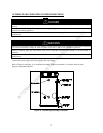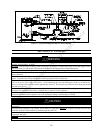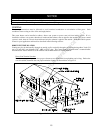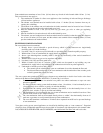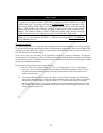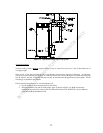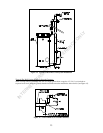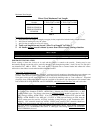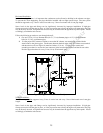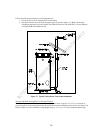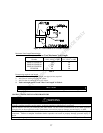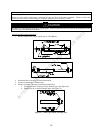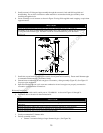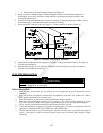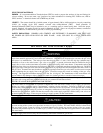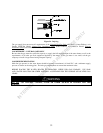
25
Horizontal Installation:
In a horizontal application, it is important that condensate not be allowed to buildup in the exhaust vent pipe.
To prevent this from happening, the pipe should be installed with an slight upward slope. The vent system
should be supported every 5 feet of vertical run and every 3 feet of horizontal run of vent pipe length.
Stress levels in the pipe and fittings can be significantly increased by improper installation. If rigid pipe
clamps are used to hold the pipe in place, or if the pipe cannot move freely through a wall penetration, the pipe
may be directly stressed, or high thermal stresses may be formed when the pipe heats up and expands. Install
accordingly to minimize such stresses.
Follow the following procedure to vent through the wall:
1. Cut one 3 1/2 in. (8.9 cm) diameter hole (for 3” (7.6 cm) diameter pipe) or 4 ½” (11.5 cm) diameter
hole (for 4” (10.2 cm) diameter pipe).
2. Use the proper PVC cement or sealant to secure the 90° exhaust vent terminal provided with the
water heater to the plastic pipes. The distance between the back edge of the 90° exhaust vent terminal
and the exterior wall (see Figure 16) must be 6 inches (13.0 cm). Use the proper cement and
assembly procedures to secure the vent connector joints between the terminal and the blower outlet.
Provide support brackets for every 3 feet (1.0 m) of horizontal vent.
Figure 16. Typical Horizontal Power Vent System
Vertical Installation:
Vertical venting must be supported every 5 feet of vertical run and every 3 feet of horizontal run of vent pipe
length.
Stress levels in the pipe and fittings can be significantly increased by improper installation. If rigid pipe
clamps are used to hold the pipe in place, or if the pipe cannot move freely through a wall penetration, the pipe
may be directly stressed, or high thermal stresses may be formed when the pipe heats up and expands. Install
accordingly to minimize such stresses.
INTERNET VERSION FOR REFERENCE ONLY



